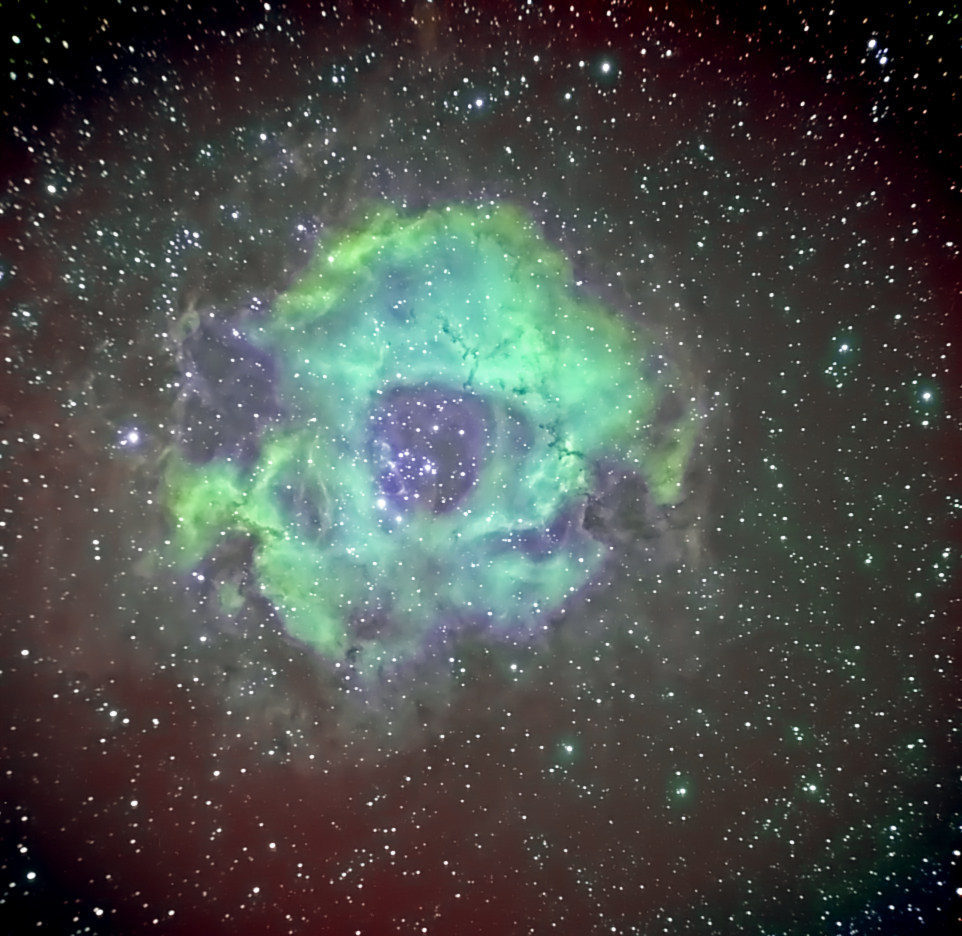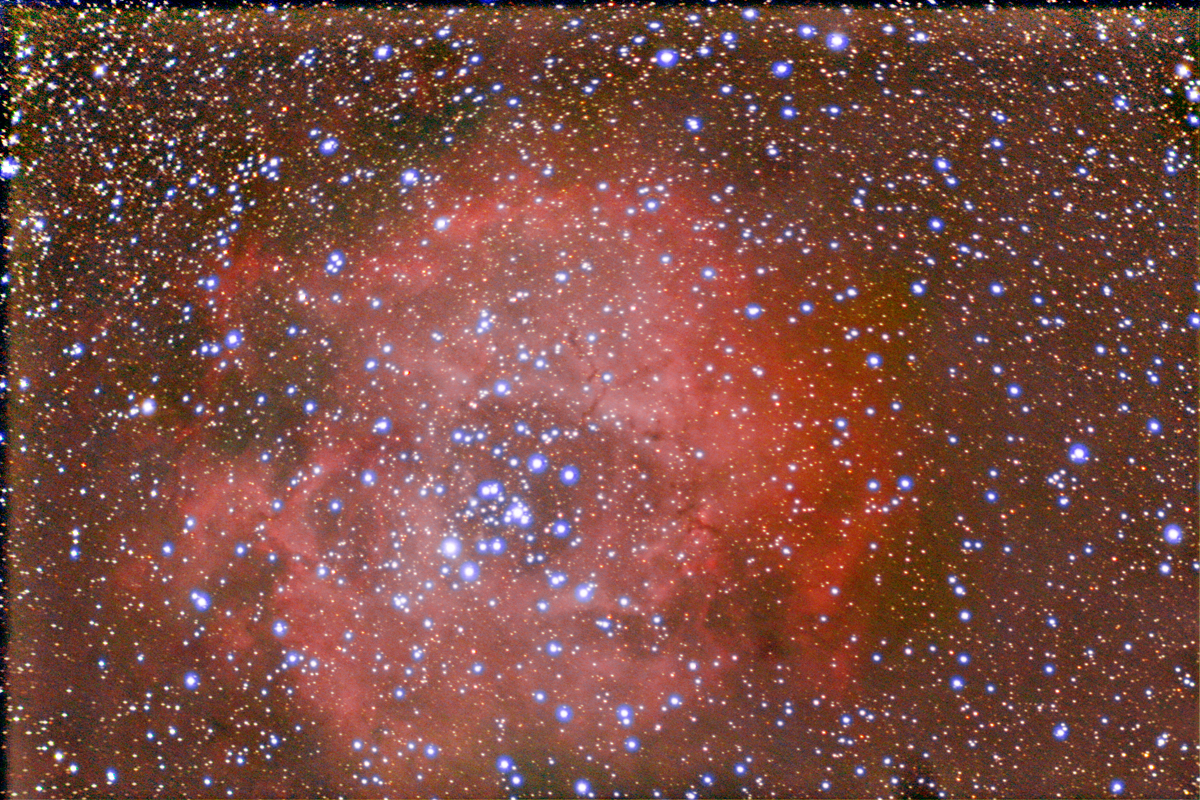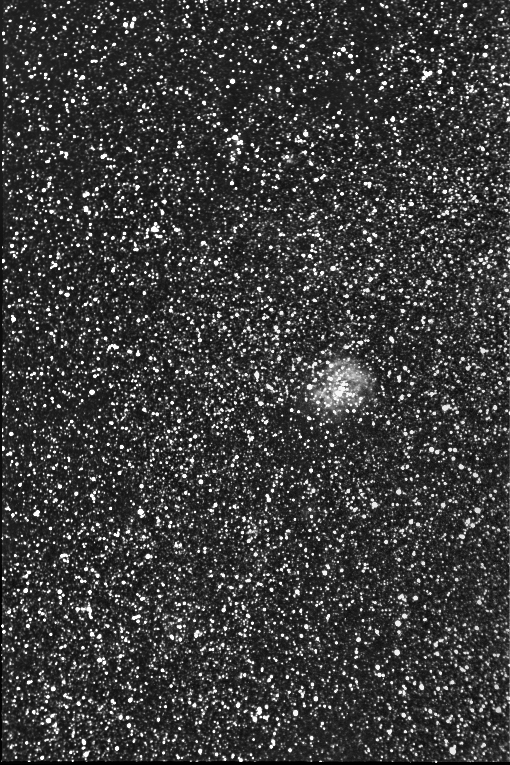
Combination of 30, 2 minute exposures.
SBIG ST-8E CCD and wide-band H-alpha filter. 50mm f/2 nikkormat lens.

The Rosette Nebula is a very well known example of an emission nebula surrounding an open cluster. Its photograph has adorned many a book or slide show on astronomy. Situated in Monoceros, it can be an ellusive object unless the skies are very dark. Then it can be observed with as small as a 6" telescope. Low magnification provides the best view as the nebula is quite large.
The nebula has 2 NGC designations, 2237 and 2238. These designate 2 of the brighter regions. The cluster in the middle has its own designation, NGC 2244. In the telescope the cluster appears as 2 parallel lines of stars, shown in the image below. The above image was made in bright moonlight using a wide-band H-alpha filter.
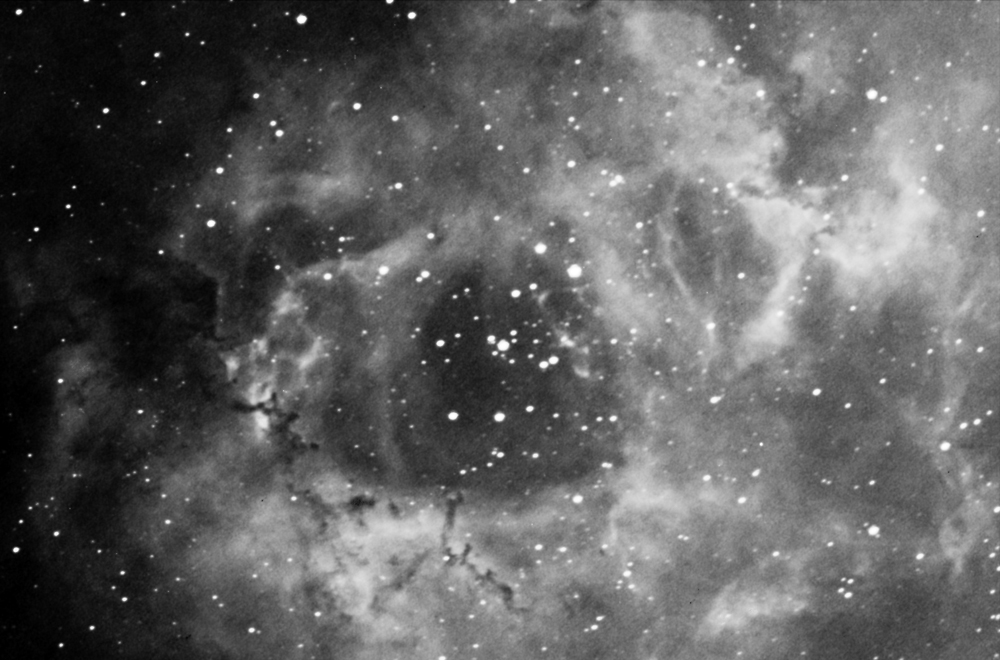
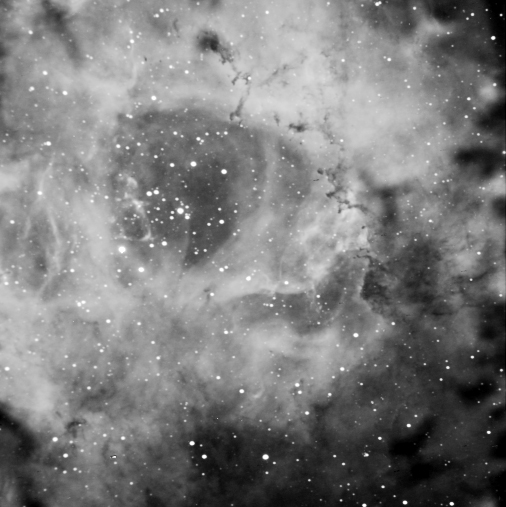
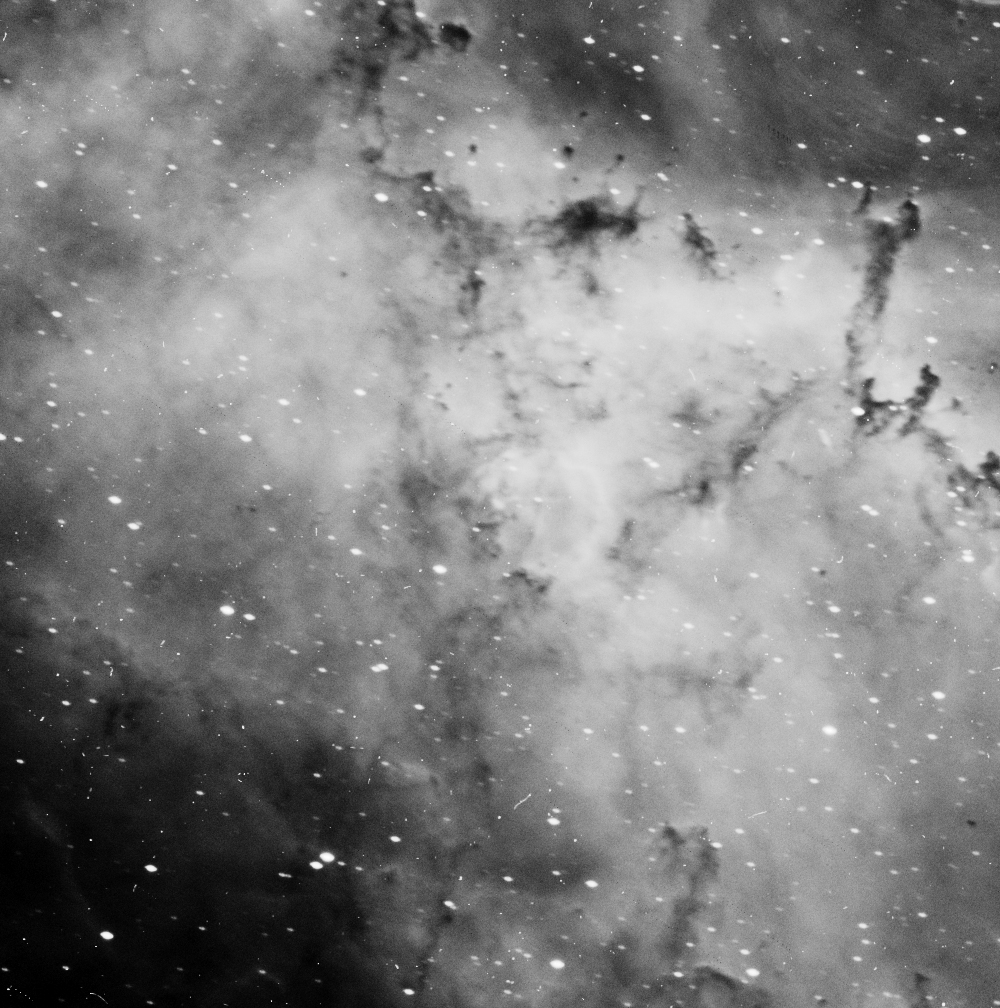
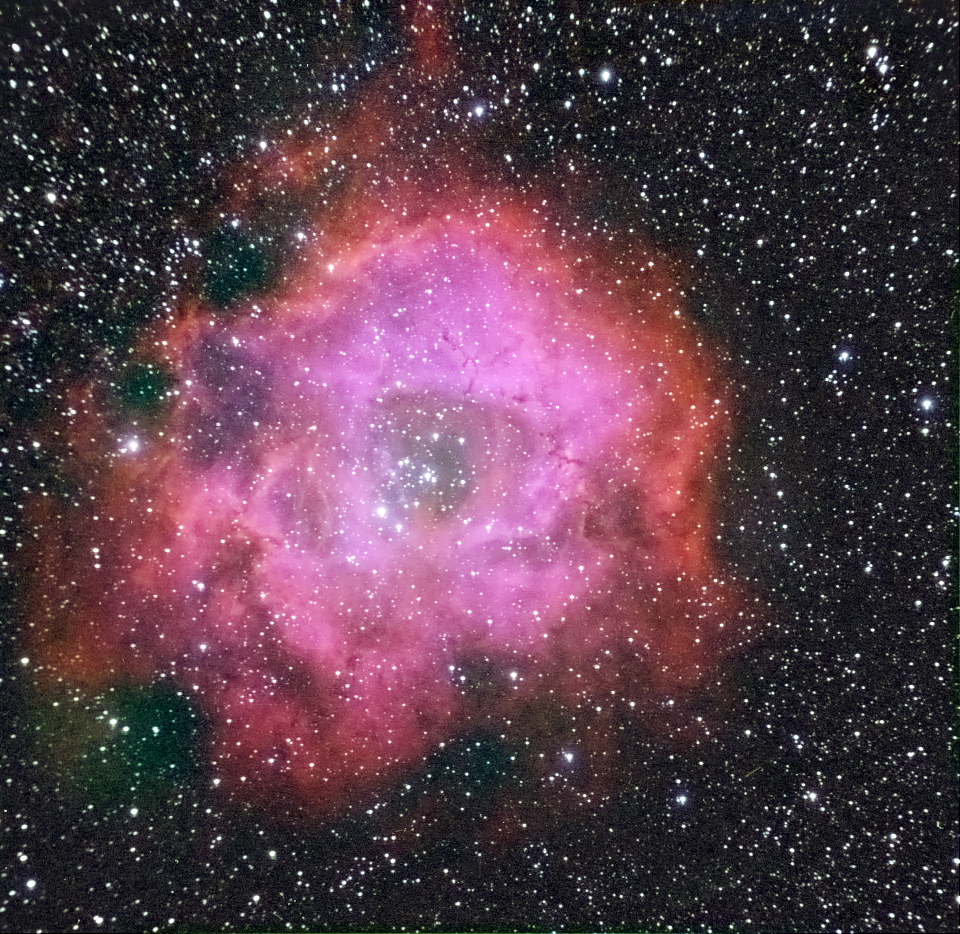
The above image was processed using the H-alpha images as the red channel. This is the preferred palette of the European Southern Observatory. The HST observers prefer to use the SII images as the red channel since the SII line is at a slightly longer wavelength than the H-alpha line. This results in a more green-dominated image as shown below.
